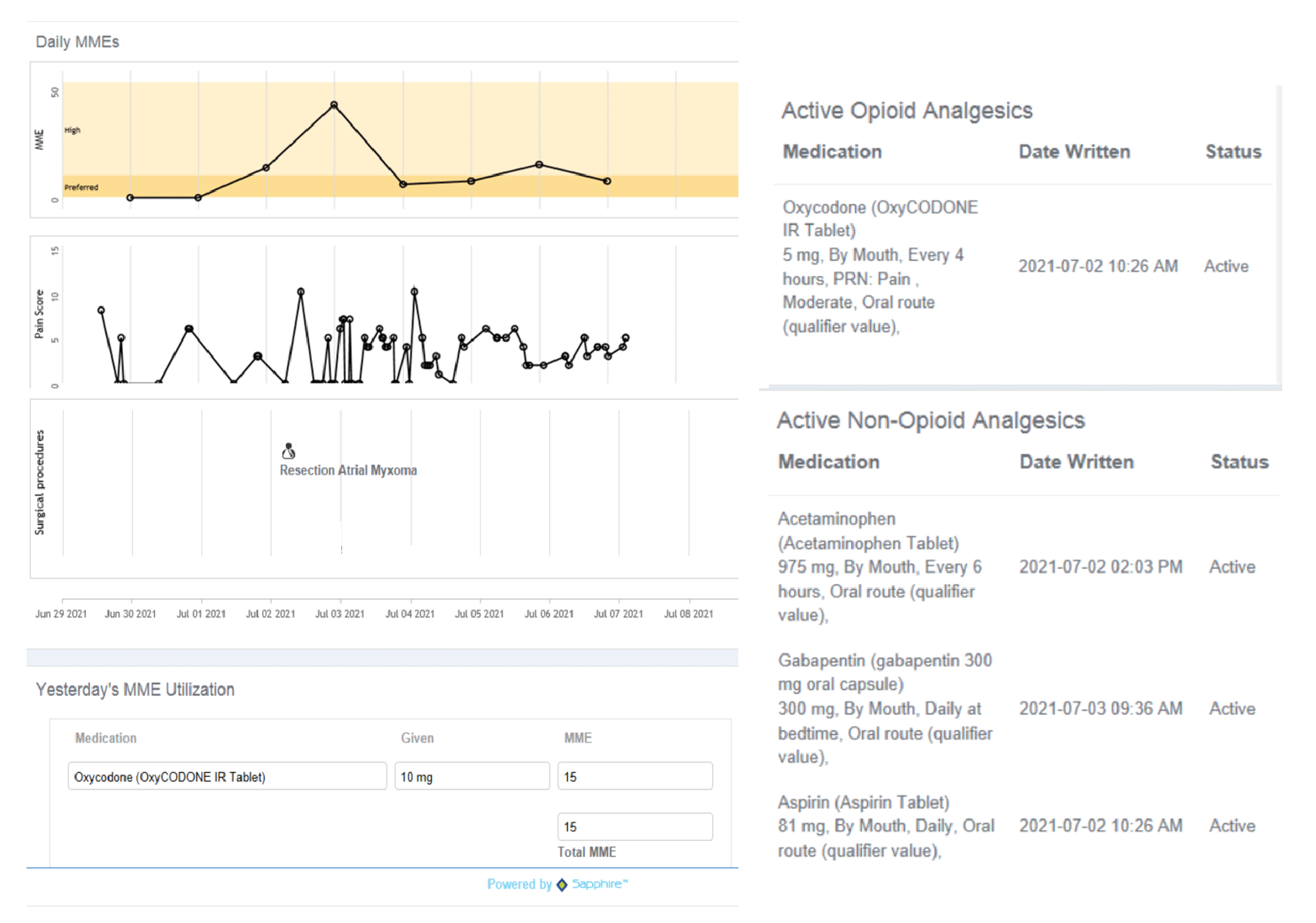May 19, 2024 | Elimu Informatics
Your clinical team can efficiently monitor daily post-operative patient opioid consumption with Elimu’s Sapphire® Peri-Op Opioid Monitor.
Elimu’s Peri-Op Opioid Monitor app integrates seamlessly with your certified Electronic Health Record and provides your clinicians, pharmacists, and nurses with situational awareness of every inpatient’s daily calculated opioid MME consumption.
The app not only displays the graphical trend line for administered opioids alongside pain control scores, but also displays all active analgesic and benzodiazepine orders which can help care teams improve performance on inpatient quality measure CMS506 for Safe Use of Opioids. A customer clinical team has been utilizing this app to support their operationalization of the Enhanced Recovery After Surgery (ERAS) guidelines for multi-modal pain management to reduce use of opioids during hospitalization and at discharge.
In a recent article published in the Anesthesia and Analgesia journal by a team utilizing the Post-Op Opioid MME App, the authors compared year-to-year data before and after implementation of the app and found that “There was a 92% reduction in mean tramadol MME at discharge (47.9 [75.5] mg vs 3.6 [18.0] mg). The total MME’s prescribed on discharge dropped by 62% (221.3 [221.7] mg vs 85.1 [142.2] mg).” One recent study has shown that inpatient opioid use is associated with increased episodes of respiratory depression, length of stay and hospital costs. However, a different study reviewing 51,824 hip and knee arthroplasty encounters found that reduced opioid use was associated with reduced length of stay and readmissions.
Our app was also featured in an HL7 Case Study to illustrate the similar power and potential of SMART-on-FHIR Apps to provide clinical decision support that goes above and beyond what most Electronic Health Records can offer with their native capabilities. This integration approach is now a feature required for certification of EHRs.
Situational awareness is key to reducing opioid utilization
Calculating administered Opioid MME totals is extremely time-consuming, yet critical in decision making when attempting to reduce opioid utilization while also balancing pain management and recovery. Most EHRs lack the functionality to compute this information though in many cases, might only present total MME ordered rather than administered. These calculations require clinicians to review the patient Medication Administration Record (MAR) for total administrations from patches, pumps, pills and injections. Then the clinician must apply the appropriate conversion factor for each medication type, which can also require being mindful of conversations that have a sliding scale. With this kind of complexity, it is no wonder that clinical teams might not be aware of the true nature of post-op opioid consumption by their patients.
Having an app that does all of the heavy lifting in a timely manner makes it easy for the clinical team to incorporate MME data into their decision making. Bringing situational awareness – what has been prescribed, how much has been administered, what’s typical for this type of surgery, what isn’t being utilized? is an essential component to better opioid prescribing practices and patient safety. Dr. Daniel T. Engelman observed that the Sapphire Peri-Op Opioid Monitor “allows us to de-escalate it, to benchmark it, and to make sure that by the time the patient is discharged, they are on the lowest possible OME (Oral Morphine Equivalent) dose, which this manuscript now has shown correlates with the least possible likelihood of long-term new persistent opioid dependence. About half of patients go home on no opioids. We’d like to make that zero.”

